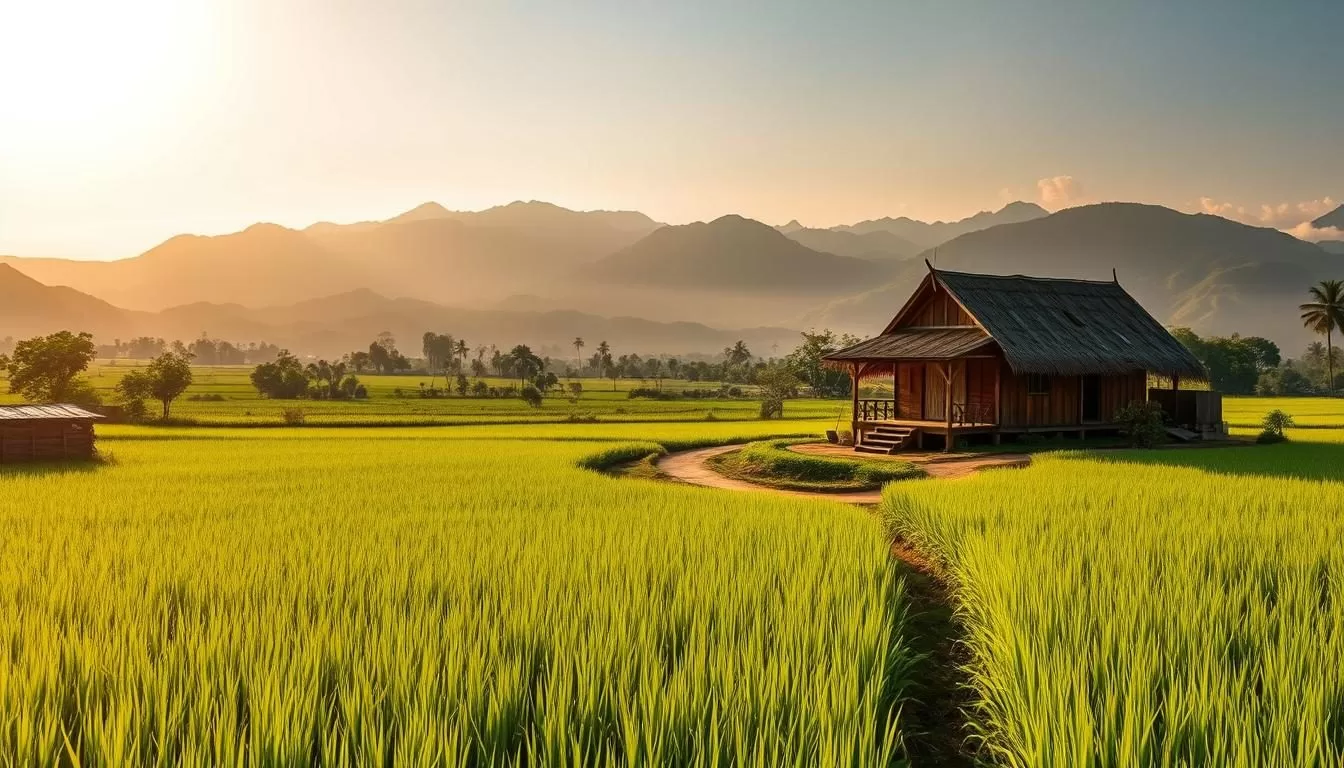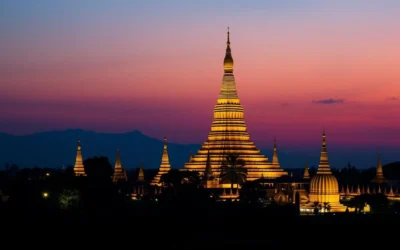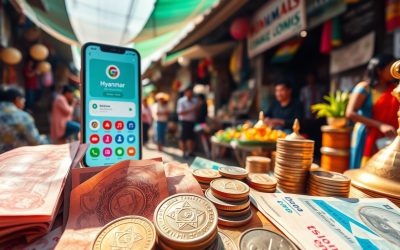✓ Accommodations✓ Flights✓ Rental Cars✓ Tours & Activities
Planning a trip to Myanmar can be a thrilling experience, but timing is crucial to making the most of your adventure. The country’s diverse geography creates distinct climate zones, ranging from humid coastal regions to dry central plains and cooler highland areas.
Understanding the seasonal changes is vital to ensuring a comfortable and enjoyable journey. Myanmar experiences a dry season from November to late April, with average temperatures around 80 degrees F. The colder months of December, January, and February are considered the best time to visit.
As you prepare for your trip, you’ll want to consider the pros and cons of visiting during different times of the year. By choosing the right season, you can optimize your travel experience and make the most of your time in this beautiful country.
Understanding Myanmar’s Climate Patterns
To make the most of your trip to Myanmar, it’s essential to grasp the country’s seasonal weather patterns. Myanmar’s climate is broadly categorized into two main seasons: the dry season and the wet season.
The Dry Season: November to April
The dry season, spanning from November to April, is characterized by relatively dry and cool weather, making it an ideal time for tourism. During this period, the temperatures are pleasant, and the humidity is relatively low.
The Wet Season: May to October
The wet season, which runs from May to October, is influenced by the Southwest Monsoon, bringing significant rainfall to most parts of the country. This monsoon season starts in April and intensifies until July and August, with Yangon receiving more than 15 inches of rain in July.
| Season | Months | Characteristics |
|---|---|---|
| Dry Season | November to April | Dry, cool weather |
| Wet Season | May to October | Significant rainfall, monsoon |
Traveling during the wet season has its benefits, including lush landscapes and fewer tourists. However, it’s crucial to be aware of the potential challenges, such as transportation difficulties and health considerations.
Peak Season: December to February
Visiting Myanmar during its peak season, from December to February, offers a unique blend of cultural experiences and comfortable weather. This period is ideal for exploring the country’s rich heritage and participating in various events that take place during these months.
Weather Conditions
The weather during the peak season is generally cool and dry, making it perfect for sightseeing and outdoor activities. Average temperatures range from 70°F to 90°F (21°C to 32°C), creating a comfortable environment for travelers.
Tourism Considerations
As this is the peak tourist season, popular destinations can get crowded, and accommodation prices may be higher. It’s advisable to book your accommodations and tours in advance to avoid any inconvenience.
Festivals and Events
Myanmar celebrates several significant events during this period, including Independence Day on January 4 and Union Day on February 12. The celebration on January 4 is marked with parades and a presidential address, offering a glimpse into the country’s rich cultural heritage. This is a great time to experience the local culture, but be aware that some areas may be busier than usual. You can expect a vibrant atmosphere throughout the country during this time of the year.
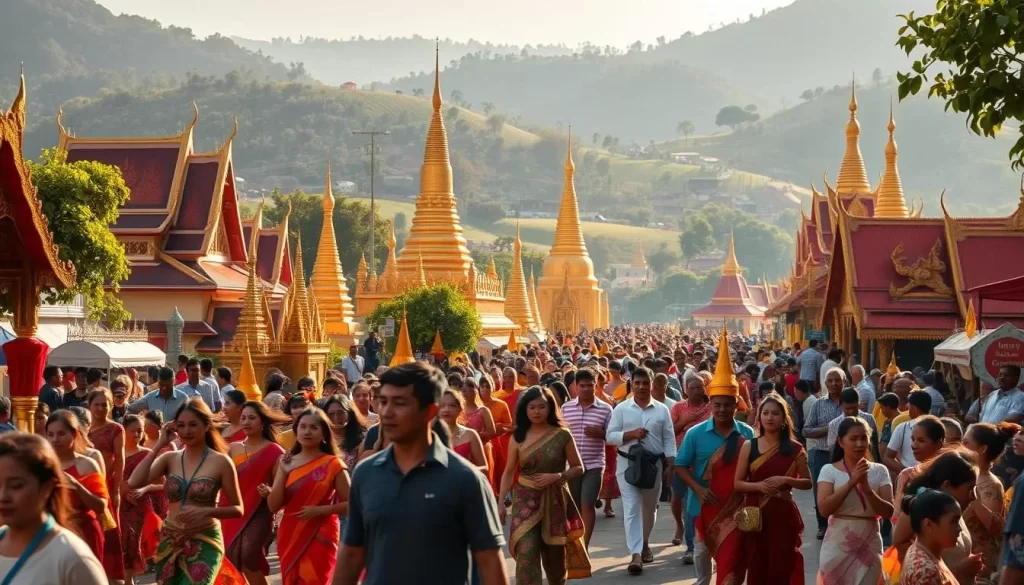
| Event | Date | Description |
|---|---|---|
| Independence Day | January 4 | Celebrated with parades and a presidential address |
| Union Day | February 12 | A public holiday commemorating the country’s unity |
Shoulder Season Benefits: October-November & March-April
The shoulder season in Myanmar, which includes October-November and March-April, presents travelers with distinct advantages. This period offers a blend of favorable weather conditions and exciting cultural events, making it an attractive time to visit.
October-November: Post-Monsoon Advantages
After the monsoon rains, October and November bring a welcome relief with comfortable temperatures and lush landscapes. The post-monsoon period is ideal for exploring Myanmar’s outdoors, from trekking in the highlands to visiting ancient temples. The air is cleaner, and the temperatures are mild, making it perfect for sightseeing. You’ll enjoy the country’s natural beauty, enhanced by the recent rains, and experience fewer crowds than during the peak season.
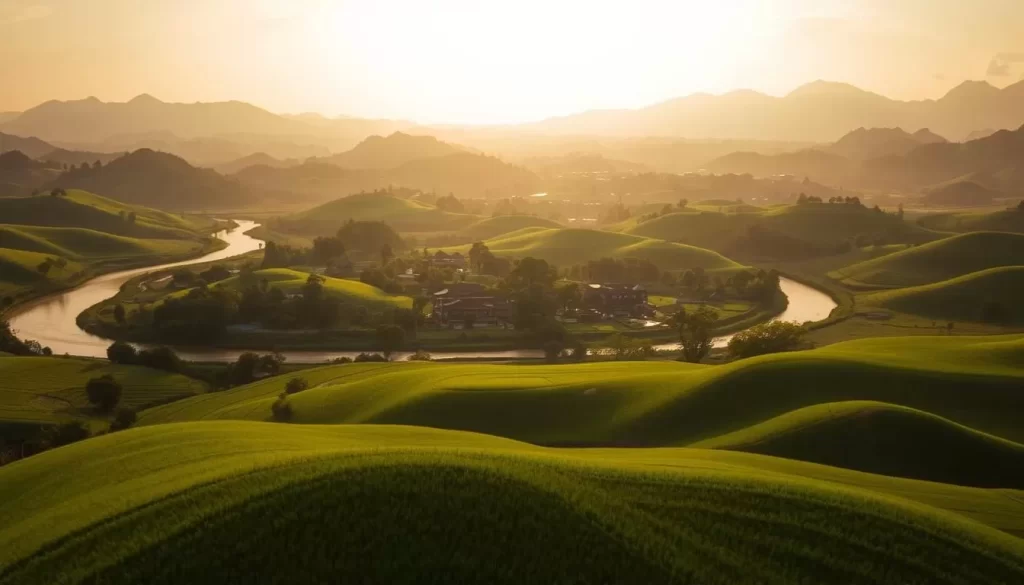
March-April: Pre-Monsoon Considerations
As March and April unfold, Myanmar heats up significantly. Temperatures in Yangon can approach 100 degrees F, and the high humidity exacerbates the heat. However, this period also hosts the Thingyan water festival in April, a unique cultural experience that offers relief from the heat. Be aware that air quality can be poor due to agricultural fires, and plan accordingly. Consider visiting highland areas like Inle Lake and Pyin Oo Lwin, where temperatures are more moderate, to escape the intense heat.
Regional Weather Variations Across Myanmar
As you travel across Myanmar, you’ll notice significant regional variations in weather patterns. The country’s diverse geography, ranging from coastal regions to highlands, contributes to these differences.
Yangon and Southern Regions
Yangon and the southern regions of Myanmar experience a tropical monsoon climate, characterized by high temperatures and humidity throughout the year. The coastal areas are generally hot and humid, with temperatures often reaching their peak during the dry season.
Bagan and Mandalay: The Dry Zone
Bagan and Mandalay, located in the central dry zone, are known for their hot and dry climate during most of the year. These areas are significantly drier than the coastal regions, with very little rainfall during the dry season.
Inle Lake and Highland Areas
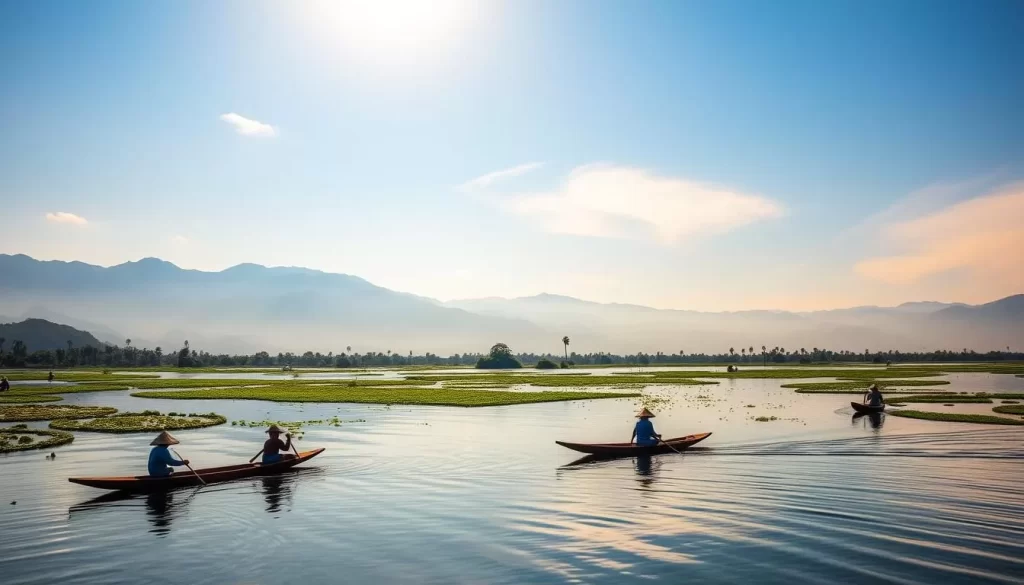 Inle Lake and other highland areas have a more moderate climate due to their higher elevation. The significant temperatures differences between day and night, especially during winter, make these regions popular for trekking and other outdoor activities.
Inle Lake and other highland areas have a more moderate climate due to their higher elevation. The significant temperatures differences between day and night, especially during winter, make these regions popular for trekking and other outdoor activities.
| Region | Climate Characteristics | Best Time to Visit |
|---|---|---|
| Yangon and Southern | Hot and Humid | November to February |
| Bagan and Mandalay | Hot and Dry | November to February |
| Inle Lake and Highlands | Mild and Moderate | October to April |
Understanding these regional variations can help you plan your trip to Myanmar more effectively, ensuring that you visit each area during its most favorable weather conditions.
Myanmar: Best Months for a Weather-Savvy Trip by Activity
Whether you’re interested in exploring ancient temples, trekking through highlands, or relaxing on the beach, Myanmar has a best time to visit based on your interests. The country’s diverse climate means that different activities are best enjoyed during different months.
Temple Exploration in Bagan
The dry season, from November to April, is ideal for exploring Bagan’s temples. The comfortable temperatures and lack of rain make it perfect for spending hours discovering the ancient ruins. You can enjoy the sunrise or sunset over the temples without the harsh midday sun.
Trekking in Highland Areas
For trekking in Myanmar’s highland areas, the cooler months from November to February are best. The temperatures are mild, making it ideal for hiking and enjoying the scenic landscapes. Some trekking paths may be challenging, so it’s essential to be prepared.
Beach Holidays at Ngapali
Ngapali Beach is best visited from November to April when the sea is calm and the weather is pleasant. Many resorts close during the monsoon season due to the harsh weather conditions. If you’re looking for fewer crowds, consider visiting during the shoulder months of November or April.
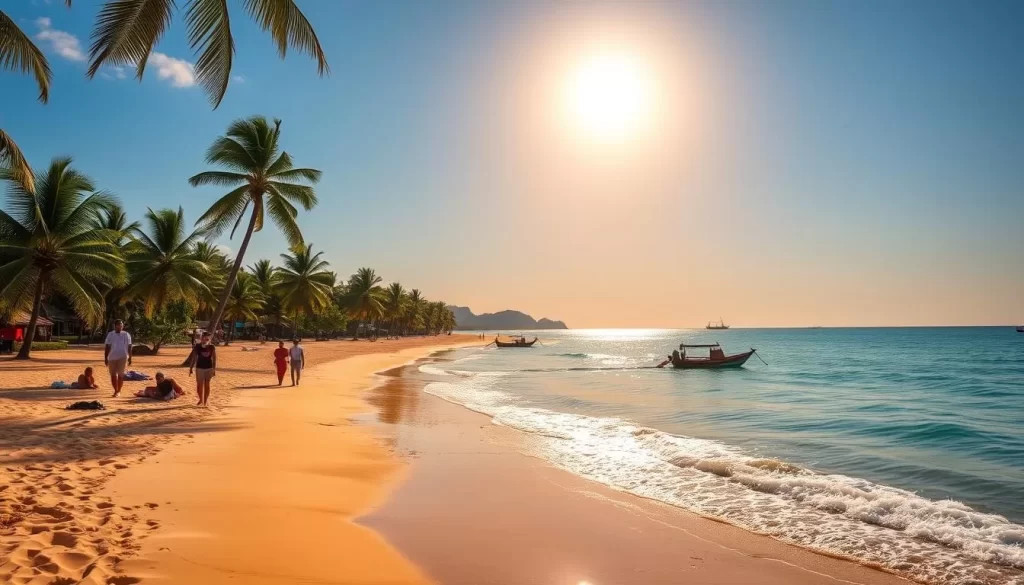
- The optimal time for beach holidays in Myanmar is from November to April.
- Advance booking is necessary during peak season.
- Shoulder months can offer a more relaxed experience.
Monsoon Season Travel: May to September
Myanmar’s monsoon season, spanning from May to September, presents a unique set of challenges and opportunities for travelers. As you plan your trip, it’s crucial to understand the implications of visiting during this period.
Pros: Lower Prices and Fewer Crowds
One of the significant advantages of traveling to Myanmar during the monsoon season is the potential for lower prices and fewer tourists. With fewer crowds, you can enjoy a more serene experience at popular sites. Additionally, some tour operators and hotels may offer discounts to attract visitors during this period. However, it’s essential to be prepared for the rain and potential disruptions.
Cons: Accessibility and Health Considerations
On the downside, the wet season brings significant challenges, including increased risks of mosquito-borne illnesses like dengue fever due to the thriving mosquito population. The humidity is also high, which can affect your comfort and energy levels. Some areas, such as Ngapali Beach, may close or become inaccessible due to heavy rainfall and flooding. You should be vigilant about protecting yourself from the health risks and plan accordingly.
Month-by-Month Weather Guide
To make the most of your trip to Myanmar, it’s essential to understand the country’s month-by-month weather patterns.
November to February: Ideal Weather
The period from November to February is considered ideal for traveling in Myanmar due to the comfortable temperatures and minimal rainfall. It’s the peak tourist season, with festivals and events adding to the country’s vibrant atmosphere.
March to April: Hot Season
As the season transitions into March to April, the temperatures rise, marking the beginning of the hot season. While it’s still a good time to visit before the monsoon sets in, travelers should be prepared for the increasing heat.
May to June: Early Monsoon
The early monsoon season, from May to June, brings significant rainfall to Myanmar. Although it’s not the peak tourist season, the lush green landscapes that follow the rains can be quite appealing.
July to October: Peak Monsoon to Transition
The period from July to October encompasses the peak monsoon months and the transition towards drier weather. July is typically the wettest month, while October sees a sharp decrease in rainfall and a rise in temperatures, making it a sweet spot for travelers who prefer fewer crowds and lush scenery.
| Months | Weather Conditions | Travel Considerations |
|---|---|---|
| Nov-Feb | Cool and dry | Ideal for tourism, festivals, and events |
| Mar-Apr | Hot and dry | Pre-monsoon, good for visiting before the rains |
| May-Jun | Early monsoon, rainy | Lush landscapes, fewer tourists |
| Jul-Oct | Peak monsoon to transition | July is wettest, Oct is a sweet spot for fewer crowds and green landscapes |
As you plan your trip, consider the unique characteristics of each period to make the most of your travel experience in Myanmar.
Conclusion: Planning Your Weather-Perfect Myanmar Trip
Myanmar’s diverse climate means there’s a perfect time for every kind of traveler to visit. The best time to visit Myanmar is from December to February, offering ideal weather conditions. However, if you prefer fewer crowds and lower costs, consider visiting in the shoulder season. By understanding Myanmar’s climate patterns and weighing the pros and cons of different times of the year, you can plan a weather-perfect trip that suits your preferences and budget.
The above is subject to change.
Check back often to TRAVEL.COM for the latest travel tips and deals.
